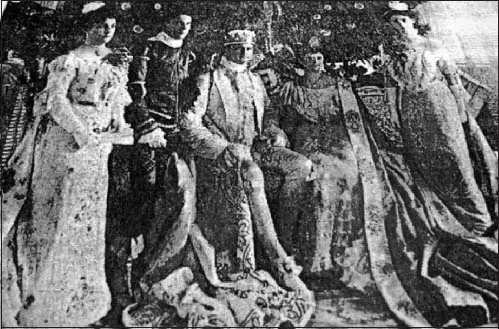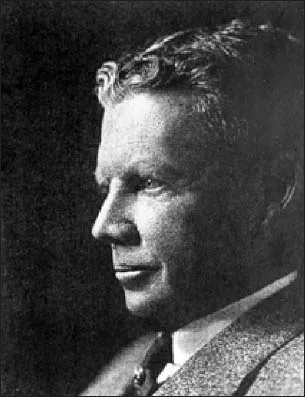![]()
Chapter 1
Early Education: The Lavender in the Shadows
Importance of Filmmaker
A short, bubbly red-haired debutante from Texas, steel magnolia Mary Ellen Bute (1906–1983), a painter, escaped to the male world of filmmaking in New York in the early 1930s. With her future husband, a talented camera man, Ted Nemeth, she was one of the first people in the USA to create abstract animated shorts, a new art form; one of the first filmmakers in the USA to incorporate electronic imagery into her films, forerunner of digital cinema; and one of few pioneer animators to screen her shorts at movie palaces, educating a large audience to the possibilities of film as art. Her film Tarantella was selected in 2010 to be in the National Film Registry of the Library of Congress.
With her keen eye and ear for talent, Bute cast Christopher Walken, at age fourteen, as the boy in her film The Boy Who saw Through. He later became a famous character actor in Hollywood. Norman McLaren, who animated Bute’s Spook Sport, later became the head of animation for the Canadian Film Board and won an Academy Award, among many honors. Bute employed McLaren’s partner, Guy Glover, as script writer for The Boy Who Saw Through. Glover became a producer for the Canadian Film Board and was nominated for four Academy Awards. Ted Nemeth, Bute’s cinematographer, was nominated for two Academy Awards. Composer Elliot Kaplan created original music for Bute’s Finnegans Wake. A young man in his thirties, he had already earned two degrees from Yale and a Fulbright Scholarship. He would go on to an illustrious career composing scores for film, ballet, and television, including The Twilight Zone, Fantasy Island, and Ironside.
Bute was the first person to interpret a work by James Joyce for the screen, enabling a broad public to visualize the excitement of Joyce’s words. She won a Cannes Film Festival Prize for her live action feature, Passages from James Joyce’s Finnegans Wake in 1965. MOMA honored her with a Cineprobe in 1983, their series presenting the work of independent and experimental filmmakers.
Fig. 1. Clare Robinson as Queen, Jesse Jones as King, 1903 of Notsuoh Ball, Houston, Houston Post, courtesy Kit Basquin Collection of Mary Ellen Bute, Yale Collection of American Literature, Beinecke Rare Book and Manuscript Library.
Bute’s persuasive powers helped her achieve performances no one else could have obtained. She inspired filmmakers and influenced animators such as Norman McLaren who, like Bute, incorporated educational text at the beginning of his films. This dynamic, driven woman, a role model for experimental filmmakers, both men and women, turned personal challenges into spring boards for success.
At the 11th Annual International Film Festival of New Cinema, Montreal, Canada, November 1982, Mary Ellen Bute, or M. E. as her family and close friends called her, was selected as one of the twenty-five most exciting independent filmmakers working. She said: “I started as a painter and I painted on a ranch”.1
Houston, Texas 1906–1923
Mary Ellen Bute, born November 21,1906, was the oldest of six children of a society couple, Clare Robinson Bute and Dr. James House Bute, a cousin of Col. Edward M. House, advisor to President Woodrow Wilson. Dr. Bute had graduated from Columbia Physicians and Surgeons in New York City with his neighbor, Dr. James Philip Gibbs, father of Virginia Gibbs (Smyth), Bute’s life-long friend.2 Dr.Bute was a pediatrician, but in 1916, he gave up medicine because he blamed himself for losing a case.3 What he said publicly, however, was that he was tired of spoiled children.4 Dr. Bute, who had inherited money from his father, who founded the Bute Paint Company in Houston, also earned money from oil leases and other investments.5 Dr. Bute had had TB before he was married, a disease that later affected his two oldest daughters, Mary Ellen and Maud.6 His youngest daughter, Lois, said that she thought the source of the disease was on Dr. Bute’s ranch.7 The cattle on the ranch or the unpasteurized milk from the cows could have spread TB.
Fig. 2. Dr. James House Bute as a young man, ca. 1910,
Clare Robinson Bute, Mary Ellen Bute’s mother, had attended boarding school in England.8 She had been the queen of the society ball in Houston, Notsuoh (Houston spelled backward) in 1903, before her marriage. The king of the ball that year with her was Jesse Jones who had his own lumber business and later would become a major builder in Houston and the U. S. Secretary of Commerce under Franklin Delano Roosevelt. Clare was socially prominent.
Mary Ellen Bute’s brother Jim, a year younger, contracted polio at the age of five and lived in leg braces for much of his life. She was closest to Jim not only in age but emotionally. She named one of her sons after him, as well as after her father. Her next brother, John (I) died in infancy. Her sister Maud died in her twenties of tuberculosis. Her younger sister, Lois (Mrs. Randon Porter), not as strikingly beautiful as Mary Ellen, was an artist called “talented”. Needless to say jealousy dictated Lois’ feelings for her oldest sister. John (II), ten years younger than Mary Ellen, would take over the family paint business.9
At first the family lived in an apartment at Butler Flats in downtown Houston, where Dr. Bute had an office.10
Houston around 1906 was a small city of under 100,000 people. Cotton and commerce were the main businesses until oil was discovered at Spindletop in 1901, at Humble in 1905, and at Goose Creek in 1906, putting Houston at the center of new oil and oilfield equipment development. In 1912 Rice Institute, later called Rice University, opened, modeled on Princeton. In 1913 the Houston Symphony started. In 1914, the new 25-foot deep Houston Ship Channel allowed the entrance of deep-water vessels, crucial for international commerce. Houston would become the largest city in Texas and the fourth largest city in the United States.
Dr. Bute and Clare would spend weekends on his ranch, twenty-five miles from Houston in Lake City on the highway to Galveston, a commercial port. They left the children with Clare’s parents who lived in a five-bedroom-house with a stable at 2316 Fannin Street in downtown Houston. Clare would ride sidesaddle at the ranch, not the typical image of a rancher. Dr. Bute hired help to care for the animals and the ranch itself. The single story house there had one bedroom with beds only for Dr. Bute and Clare, but the children visited during the day.11
Bute Escape
When Jim Bute contracted polio in 1912, the family moved into Clare’s parents’ home, a few blocks from the Gibbs home at 3618 Fannin. This area is now midtown Houston, blocks from Interstate 45.12 Mary Ellen Bute was six years old. The Robinson home accommodated the grandparents; parents; children; Clare’s unmarried sister “Dolly” Robinson (Mrs. Geiston King); Sylvia Norsworthy (Harrison), the step-daughter of Clare’s married sister Agnes Robinson Norsworthy, but called “cousin”; a live-in Scandinavian masseuse to massage Jim’s legs daily; and a housekeeper. The Robinson house had screened sleeping porches, no doubt fully utilized.13 Later, after Mary Ellen Bute moved away but came back to visit, her youngest sister, Lois, obviously envious and feeling neglected, complained: “When she came home, ‘Sis is home’ – big to do. Everyone else was forgotten”.14 John Bute, Mary Ellen Bute’s youngest brother, said, “She would visit for five or six months. We had to fix up a room for her”.15 Rooms in the Robinson-Bute house were at a premium. Mary Ellen Bute, not fully appreciated at home, was called not by her name, but “Sis”. As a visiting relative, she was treated as a guest and given a bedroom, so she did not need to share the sleeping porch with her siblings, but no one in the family recognized her originality as a pioneering filmmaker, a new field unfamiliar to them.
Mr. C. W. Robinson, Mary Ellen Bute’s grandfather, was of British descent. He was President of Markham Rice Milling Co. in Markham, Texas. Mary Ellen Pittet Robinson, Bute’s grandmother, after whom she was named, was Scottish. She was called “Granny” and became Mary Ellen Bute’s first protector and role model. Granny was smart, literary, and devoted to her first granddaughter.16 Granny would read to all of the children, filling a literary gap in the family, according to Bute’s brother John:
Granny read to us after supper, Dickens. She loved poetry, Shakespeare, old English murder stories…Granny took care of us when Mom and Dad were at the Ranch … . Our father was an outdoor man, not musical or a reader. Mom was not literary, not in a book club. No one was musical.17
“Cousin” Sylvia Norsworthy (Harrison), who lived in the Robinson-Bute home, expressed her love for Mary Ellen Bute and confirmed Bute’s attachment to her grandmother:
She [Mary Ellen Bute] was the most wonderful cousin. Unique. I loved her … Most effervescent, enthusiastic, cheerful, optimistic … Every man who came to call on her fell in love with her … She talked a lot about Granny … She didn’t talk about her brothers and sisters … Granny was a great reader … Granny was brilliant … .18
Bute’s vivacity and optimism were cherished by friends and colleagues throughout her life. Clearly Granny Robinson gave her support that no one else in the family could offer and was an important force in her break from home. Typical of expectations in well-to-do American families at the time, and in fact for decades to come, young women were expected...


